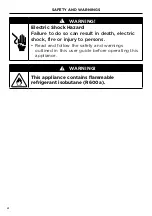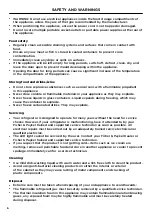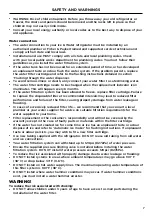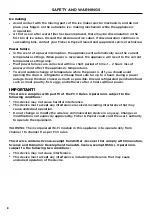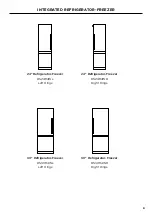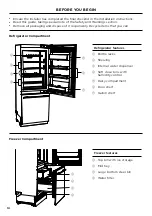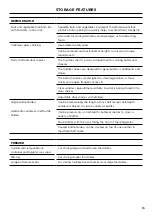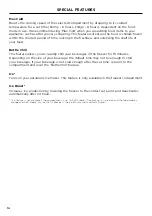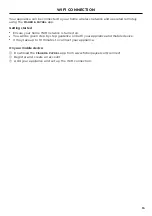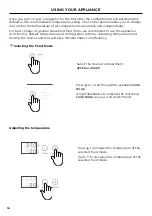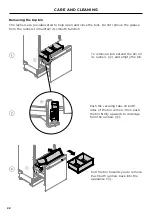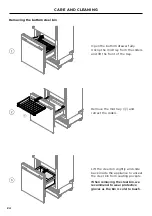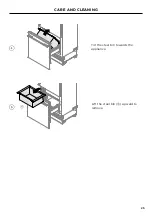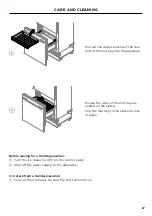
12
Variable temperature zones
Separate food modes, in both fridge and freezer, allow you adjust the temperature
independently for optimal storage.
Refrigerator
FOOD
MODES
DESCRIPTION
TYPES OF FOOD TO STORE
Pantry
(12°C/54°F)
Pantry mode provides a cool, dark place
for a wide variety of foods that perish
quickly or may spoil at room temperature,
but are too sensitive to be stored at normal
refrigerator temperatures.
Bananas, avocados, tomatoes.
Dry food items such as grains, flours,
sugars, crackers, cereal, baked goods,
tortillas, wraps and breads.
Dry food items such as grains, flours,
sugars, crackers, cereal, baked goods,
tortillas, wraps and breads.
Wine
Fridge
(3°C/37°F)
The ideal mode for fresh, everyday foods.
This mode offers a higher relative humidity
than many other refrigerators allowing fresh
foods such as fruits and vegetables, meats
and cheeses to stay fresher for longer.
Fruit and vegetables, dairy products,
jams and chutneys/preserves, meats
and drinks.
Freezer
FOOD
MODES
DESCRIPTION
TYPES OF FOOD TO STORE
Soft Freeze
(-9°C/16°F)
Soft Freeze mode is an extension of your
refrigerator, extending the shelf life of
perishable items while maintaining the
quality. Soft Freeze mode allows easy
portioning of food and the ability to heat,
cook or serve foods straight from the
compartment without waiting for it to thaw.
Meats, seafood, soups, sauces, pureed
foods, bread, desserts and pastries.
Note: Soft Freeze mode is not
recommended for storage of creamy
desserts such as ice cream.
Freezer
(-18°C/0°F)
Freezer mode is for general frozen food
items that require storage between 1 – 12
months. For frozen food items that may
need to be stored for longer periods, press
the
button to reach -13°F (-25°C). This
extends the shelf life of general frozen
items by up to 6 months.
Meat, poultry, seafood,
pre-cooked foods and leftovers, some
fruits and vegetable, ice cream, and
other frozen desserts.
General frozen food items that are
required to be stored for extended
times , eg larger cuts of meat.
FOOD MODES




